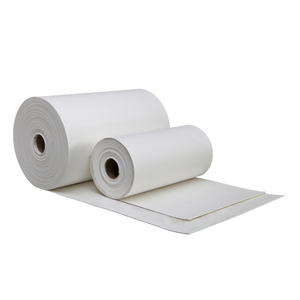Professional industry ceramic supplier, silicon nitride, silicon carbide, aluminum nitride and any other kinds of ceramics.
PRODUCT PARAMETERS
Description
Overview of Heat-Resistant Ceramic Fiber Board, High-Density Fiber Board
Heat-Resistant Ceramic Fiber Board, High-Density Fiber Board is a lightweight, high-temperature insulation material composed primarily of alumina-silica. It is manufactured through a melting and spinning or blowing process, resulting in a flexible, wool-like textile. This material is engineered to provide exceptional thermal management, conserving energy and protecting equipment in extreme temperature environments across various industries.
Features of Heat-Resistant Ceramic Fiber Board, High-Density Fiber Board
-
Excellent Thermal Stability: Withstands continuous operating temperatures up to 1260°C (2300°F) and higher for certain grades, with minimal shrinkage.
-
Low Thermal Conductivity: Provides highly efficient insulation, reducing heat loss and improving energy efficiency.
-
Lightweight & Low Heat Storage: Offers low thermal mass, enabling rapid heat-up and cool-down cycles for improved process control and energy savings.
-
Thermal Shock Resistance: Highly resistant to damage from rapid temperature changes.
-
Excellent Flexibility & Resilience: Can be fabricated into blankets, boards, papers, and textiles to fit complex shapes and applications.
-
Good Chemical Stability: Resists attack from most corrosive agents, except strong alkalis and hydrofluoric acid.
Specification of Heat-Resistant Ceramic Fiber Board, High-Density Fiber Board
This product is a high-density ceramic fiber board. It is made from alumina-silica products. The board uses outstanding warmth resistance. It functions well in extremely high temperatures. Several sectors utilize this material for insulation. It manages temperature levels as much as 1427 ° C or 2600 ° F. This makes it great for heating systems and kilns. The boards come in different densities. You can get 300 kg/m FIVE, 320 kg/m ³, or 350 kg/m four. Greater thickness means far better stamina. It likewise enhances resistance to disintegration. The boards are stiff and simple to deal with. They can be reduced into forms. This is useful for lining devices. Thermal conductivity is reduced. This stops heat from moving through. It saves power in high-heat processes. The material has low warm storage space. It warms up and cools quickly. This is good for thermal cycling. The boards withstand most chemicals. They are steady in lowering or oxidizing ambiences. Physical stamina is great. The boards withstand mechanical anxiety. They have low contraction at high temperatures. This maintains their shape in time. Applications are broad. Utilize it in heating system linings, back-up insulation, or growth joints. It benefits kiln car tops and heater blocks as well. Fire security systems utilize it. It is a functional insulation service. The board supports commercial efficiency and safety and security. It is a dependable choice for requiring warm environments.
Applications of Heat-Resistant Ceramic Fiber Board, High-Density Fiber Board
Heat-resistant ceramic fiber boards are fantastic for high-temperature work. They deal with warmth well. These boards are made from unique ceramic fibers. They are solid and light. They stand up to warm up to really high temperatures. This makes them best for many uses.
You locate these boards in heating systems and kilns. They line the inside wall surfaces. They keep warm inside and save power. They are also great for boilers and heating systems. They secure the outer surfaces from obtaining too warm. This improves safety and security.
High-density ceramic fiber boards are even tougher. They are made similarly yet packed tighter. This makes them more powerful. They withstand more damage. They benefit areas needing extra toughness. They hold their form much better under high warmth and pressure.
Both types insulate well. They slow down heat transfer. This maintains heat where you want it. It makes tools work better. It saves gas or power. Workers are much safer as well. Warm surfaces remain cooler on the outside.
These boards are very easy to cut and form. You can fit them right into different areas. They are simple to install. You can glue them or utilize mechanical fasteners. They last a very long time. They do not rot or break down quickly.
High-density boards are often made use of in more demanding spots. Think about locations with hefty tons or fast gas circulations. They are also common in backup layers. They sustain softer insulation. This adds stamina to the whole system.
Company Profile
Tanki New Materials Co.Ltd. focus on the research and development, production and sales of ceramic products, serving the electronics, ceramics, chemical and other industries. Since its establishment in 2015, the company has been committed to providing customers with the best products and services, and has become a leader in the industry through continuous technological innovation and strict quality management.
Our products includes but not limited to Aerogel, Aluminum Nitride, Aluminum Oxide, Boron Carbide, Boron Nitride, Ceramic Crucible, Ceramic Fiber, Quartz Product, Refractory Material, Silicon Carbide, Silicon Nitride, ect. please feel free to contact us.

Payment Methods
T/T, Western Union, Paypal, Credit Card etc.
Shipment Methods
By air, by sea, by express, as customers request.
5 FAQs of Heat-Resistant Ceramic Fiber Board, High-Density Fiber Board
What is high-density ceramic fiber board?
It’s a strong board made from ceramic fibers. People press these fibers tightly together. This makes the board very dense and tough. It handles high heat well. People use it in furnaces, kilns, and boilers.
How much heat can it handle?
This board handles very high temperatures. It works fine even over 2300°F (1260°C). Some types handle even more heat. It depends on the exact materials used. Always check the specific board’s rating before buying.
What is it used for?
People use it where things get very hot. It’s good for lining furnaces and ovens. It works well behind heating elements. It insulates pipes carrying hot stuff. It protects structures from heat damage. It’s useful in many industries.
How do you install it?
Cutting it needs special tools. Use a saw with carbide teeth. You might need a special knife too. Wear gloves and a mask. The fibers can irritate skin and lungs. Secure the board firmly in place. Use pins or special glue made for high heat.
Why pick this over other insulation?
It’s lighter than firebricks. This makes building easier. It holds heat better than many blankets. This saves energy. It doesn’t let heat pass through easily. It lasts a long time under heat. It takes up less space than some options.
REQUEST A QUOTE
RELATED PRODUCTS
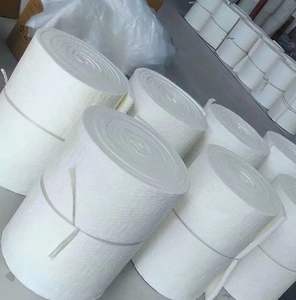
Industrial design style Ceramic Fiber Blanket 128 x 160 kg/m³, 64 kg/m³ warm wool fiber, Ceramic Wool Insulation.
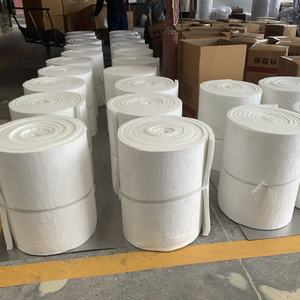
Durable and high-temperature ceramic fiber modules for boiler insulation and high-temperature industries
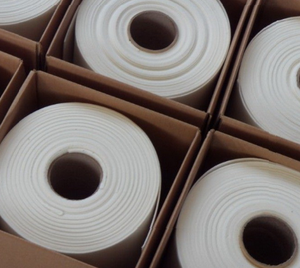
Industrial Fireproof Flexible Insulation, Asbestos-Free, High-Temperature Stable Ceramic Fiber Rolls
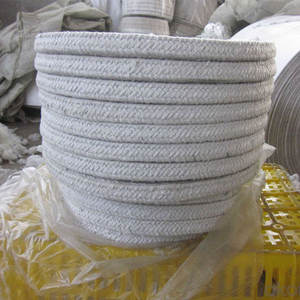
Ceramic Fiber blanket s offer a variety of specifications and indicators for insulating fiber blankets.

High-temperature, low-cost Ceramic Fiber Blanket 1260°C 128kg/m³ Density Ceramic Fiber Blanket
